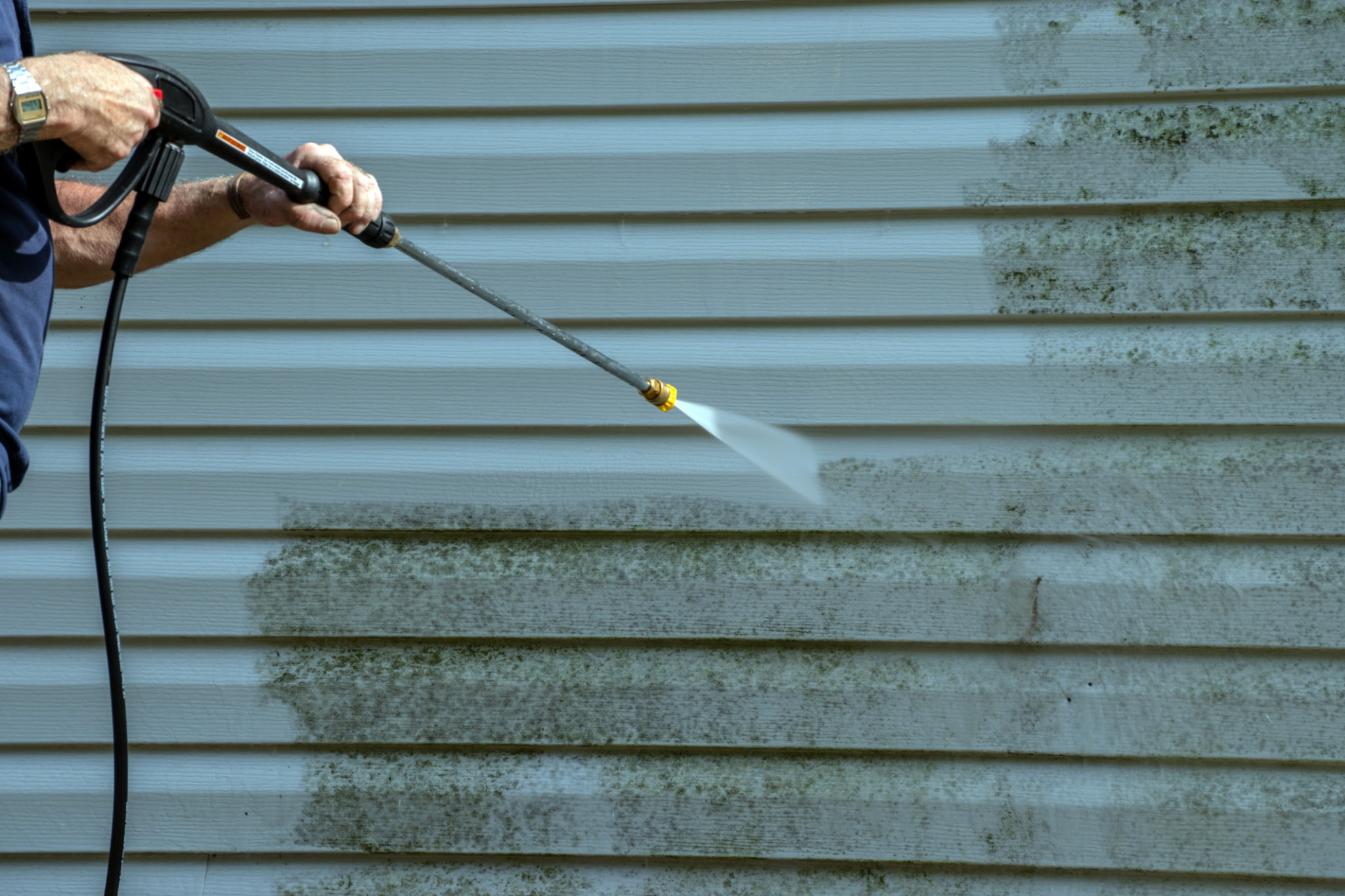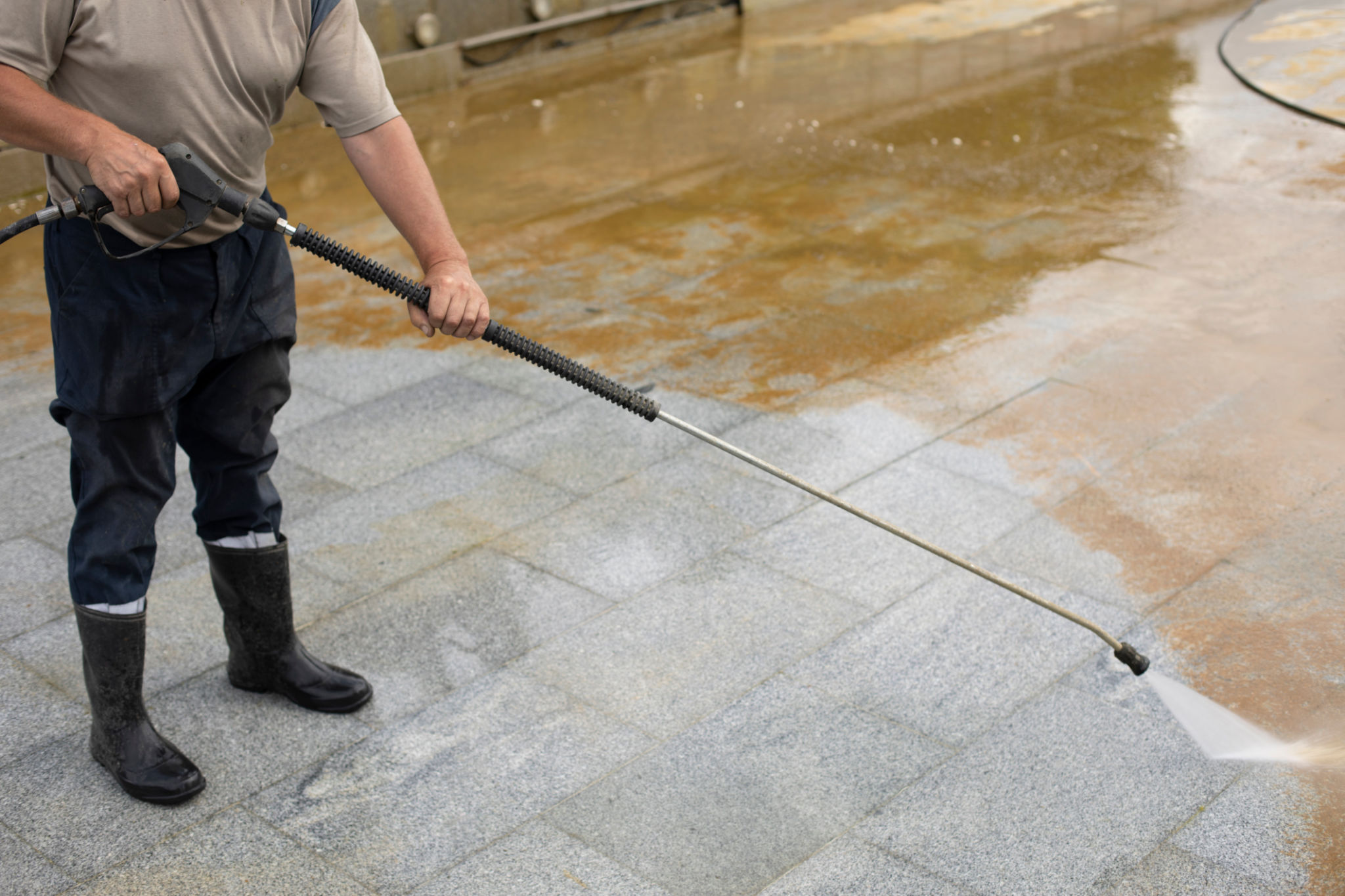The Ultimate Guide to Power Washing Your Home's Exterior
Understanding Power Washing
Power washing, also known as pressure washing, is a highly effective method for cleaning your home's exterior. This cleaning technique uses a high-pressure water spray to remove dirt, mold, mildew, and grime from surfaces like siding, decks, driveways, and patios. It's a popular choice for homeowners looking to maintain their property's curb appeal and longevity.

Before diving into the process, it's essential to understand the difference between power washing and pressure washing. Though often used interchangeably, power washing typically involves heated water, making it more effective at removing stubborn stains and grime. In contrast, pressure washing relies solely on pressure without the added benefit of heat.
Preparing for Power Washing
Proper preparation is crucial to ensure a successful power washing session. Start by inspecting your home's exterior for any loose or damaged surfaces that could be further compromised by the high-pressure spray. Secure or repair any identified issues before proceeding.
Next, clear the area around your home. Remove furniture, decorations, and potted plants from decks and patios. Cover any electrical outlets and delicate landscaping with plastic sheets or tarps to protect them from water damage.
Selecting the Right Equipment
Choosing the appropriate power washer is key to achieving professional results. Power washers come in various models with different power levels measured in PSI (pounds per square inch) and GPM (gallons per minute). For most residential tasks, a machine with a PSI between 1,500 and 3,000 and a GPM of 2.5 is sufficient.

Additionally, consider investing in the right nozzles and attachments. Wider nozzles are ideal for general cleaning, while narrow nozzles are better suited for tough stains. Some power washers also offer adjustable spray settings to provide more control over the cleaning intensity.
Power Washing Techniques
Once you're equipped and prepared, it's time to start power washing. Begin by applying detergent to the surface using a low-pressure nozzle. Allow the detergent to sit for a few minutes to break down grime and stains effectively.
When rinsing, move the wand in a consistent pattern, maintaining a distance of about 6-12 inches from the surface to avoid damage. Always start from the top and work your way down to prevent streaking. For stubborn areas, you may need to make multiple passes.

Safety Tips
Power washing can be hazardous if not performed correctly. Always wear protective gear such as gloves, goggles, and non-slip shoes. Be cautious of electrical hazards and avoid power washing in rainy or windy conditions. Never point the spray at yourself or others.
Maintaining Your Power Washer
After completing your cleaning project, it's important to properly maintain your power washer for future use. Flush out any remaining detergent and debris by running clean water through the system. Store the unit in a dry, sheltered location to prevent damage from weather exposure.
Regular maintenance checks will prolong your equipment's lifespan and ensure optimal performance. Inspect hoses, nozzles, and other components for wear and tear before each use.
Conclusion
Power washing your home's exterior is an excellent way to enhance its appearance and safeguard its structural integrity. By understanding the process, selecting the right equipment, and following safe practices, you can achieve professional-level results with ease. With regular maintenance and care, your power washer will remain a valuable tool for years to come.
